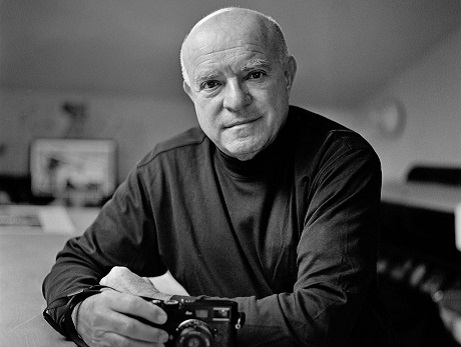Biography
Constantine Manos was born in Columbia, South Carolina, in 1934. His father emigrated from Greece to the United States in 1915, his mother in 1930. Both were from farming and fishing families, like most Greek village families between 1890 and 1930, the period of the greatest waves of immigration from Greece. Manos's parents never became truly assimilated to life in the United States, yet he describes their response to his becoming an artist as very positive. Possibly they felt that his choice reinforced his connection with his ethnic background and their own interests and values as well, a notion given some credence by the fact that his sister also chose a career in the arts, as a violinist.
Manos was only nineteen when he became the official photographer for the Boston Symphony Orchestra at the Tanglewood Festival in Massachusetts, and then a staff photographer with Stars and Stripes in Europe. In 1963, he joined the prestigious international picture agency Magnum Photos, and to this day his photojournalism remains world-renowned. From 1961 to 1964, Manos photographed life in Greek villages, capturing images that he published in his book A Greek Portfolio (first printed in 1972, and reprinted in 1999) These photographs convey, in black and white, the interaction between the architectural and natural elements in the Greek landscape while chronicling the extraordinary people encountered by Manos in his travels. One image from the portfolio, Women at Graveside, Mani, Greece(1962), is a representation of a group of older women, their faces distorted by anguish and tears, personifying the mask of tragedy. A Greek Portfolio was followed by The Bostonians (1974) and American Color (1995). Manes lists classical music among influences that have contributed to his work, as well as the work of French photographer Henri Cartier-Bresson and American painter Edward Hopper. Like Cartier-Bresson, Manos composes through the viewfinder and uses a camera that can quickly capture any chance occurrence. Manos's recent work, in color, vividly evokes the pageantry of public festivals, parades, beaches, and other public spaces across the United States, with special attention to the interaction between individuals and the spectacle of life that surrounds them. A master of spatial relations, Manos creates seemingly magical shifts in scale within his tableaux. The sensuality of Manos's color photography derives from his emphasis on complex textures, lush color, and a sculptural treatment of the human figure.
“I have never had a problem with being Greek and American. I am an American of Greek descent and enjoy and use the best of both cultures.“
Constantine Manos’s biography is sourced from the catalogue of the exhibition Modern odysseys: Greek American artists of the 20th century (Selz, Peter, and William R. Valerio. 1999. Queens, N.Y.: Queens Museum of Art.)



